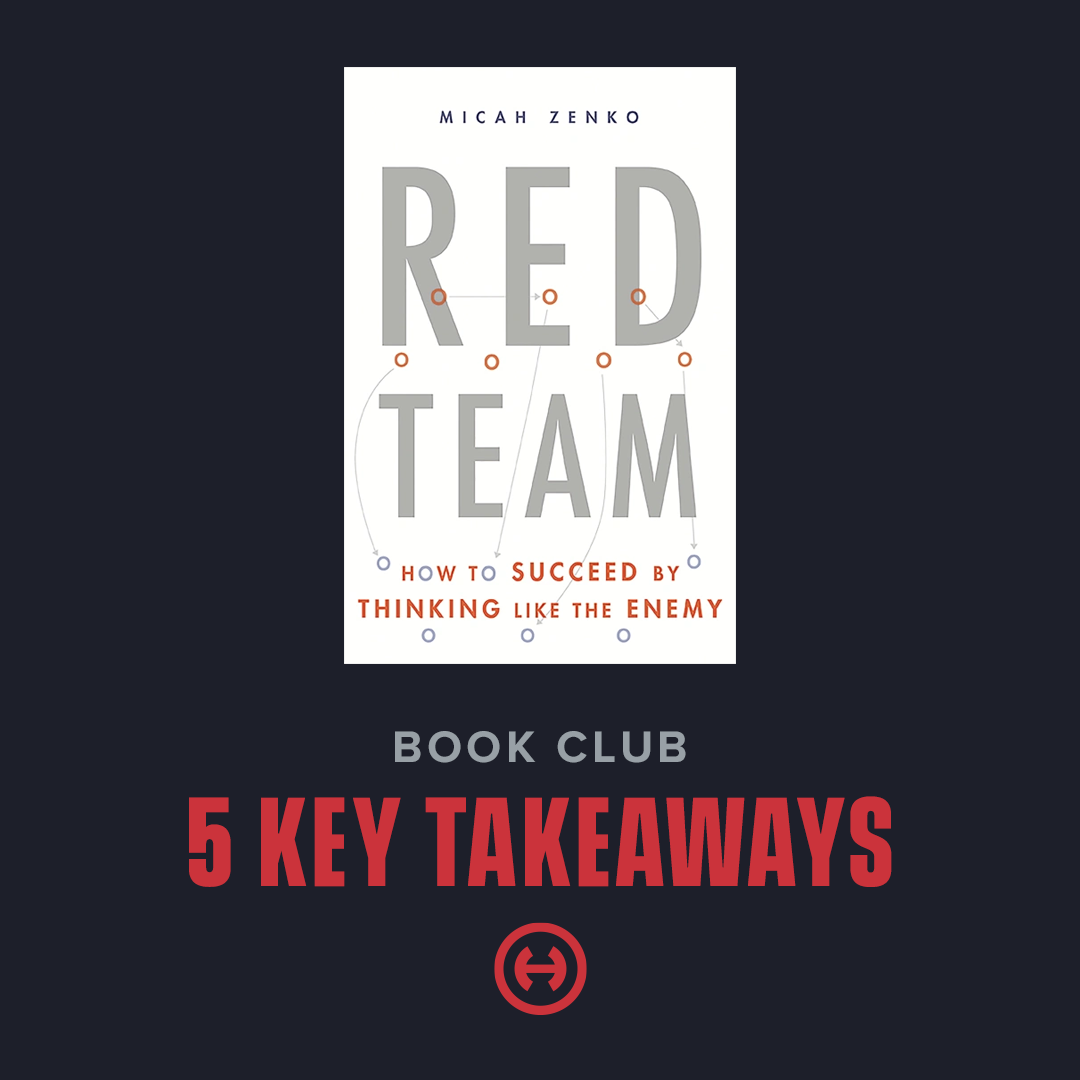Last month, our agency book club examined “Red Team: How to Succeed by Thinking Like the Enemy” by Micah Zenko. This book offers a unique perspective on how to strengthen organizations by poking holes in their best practices – defining “red teams” as groups designed to analyze and test the vulnerabilities of an institution. If you’re ready to get into the enemy’s head through an informative and engaging read, pick up a copy here. If not, enjoy our team’s five key takeaways.
- The Boss Must Buy In. The most vital of all red teaming strategies. In addition to committing the optimal time and resources for red teamers to discover actionable changes, leadership must recognize that there are weak points within the organization – and be open to embracing creative solutions in the future. If the boss does not buy in, red teaming can become ineffective and lead to disaster, along with providing a false sense of security.
- Outside & Objective, Inside & Aware. Before red teaming can begin, clear goals need to be established, and the red team must be given access to quality information about the company. This allows members of the red team to become knowledgeable about the entity and its processes, while remaining removed enough that they won’t be influenced by cognitive and organizational implicit biases.
- Fearless Skeptics With Finesse. Many people believe themselves to be open-minded, but studies show most of us are shaped by strong, personal biases. Such biases are forged by our experiences and everyday environments, and they can lead us to over-evaluate the status quo based on their mere existence rather than principle or reason. The best red teamers are critical, divergent thinkers who are inherently skeptical of authority and conventional wisdom. They don’t conform to norms, nor are they subject to the same experiences and everyday environments – and can offer institutions a fresh, diverse perspective on what isn’t working, what’s wrong and what could go wrong.
- Be Willing To Hear Bad News and Act On It. Because red teams operate outside of the traditional company hierarchy and won’t be punished for pointing out flawed processes or strategies, red team reports (when done correctly) typically don’t contain any reaffirming or positive information for the company being red teamed – instead, only findings. Once findings have been submitted, it’s up to the company leaders to review the report and then create a work plan and timeline for implementing priority changes with the proper funding. Executing this plan begins by notifying employees, discussing the gaps and explaining why these changes matter – ensuring employee buy-in and actionability, which is critical.
- Outlook of Red Teaming. When properly scoped and structured, red teaming can provide significant information and results. However, the practice of red teaming does have its limits and should never supplant an organization’s culture and values. Red teaming too much, too fast can be risky and demoralizing for a workforce. It is not a cure-all, but it does offer a comprehensive approach to help tackle specific challenges an organization may face. If your company or client operates within a fast-paced environment with rapid change and incomplete information, red teaming is encouraged for digging into strategies and processing ideas and conventions to gauge their validity and effectiveness over time.
